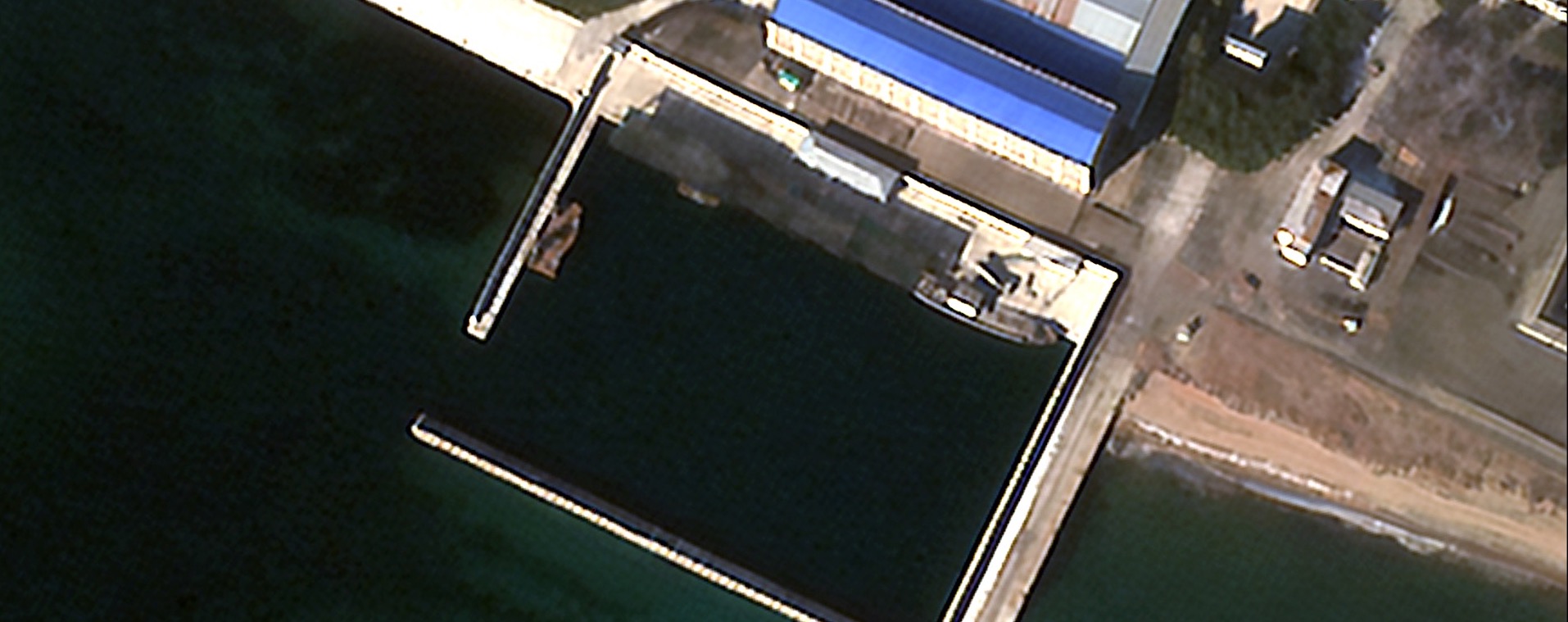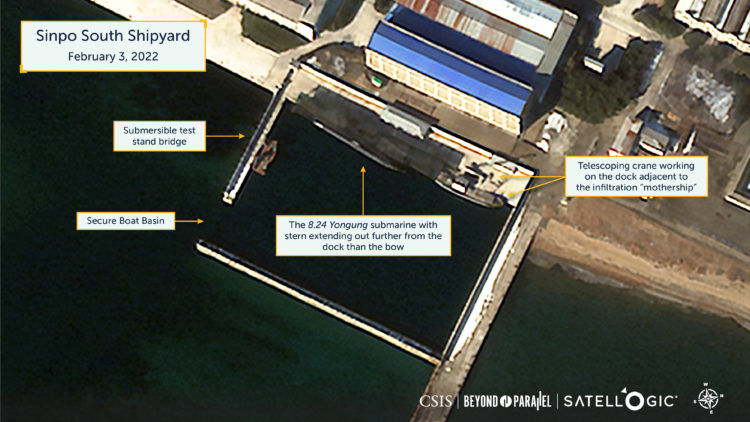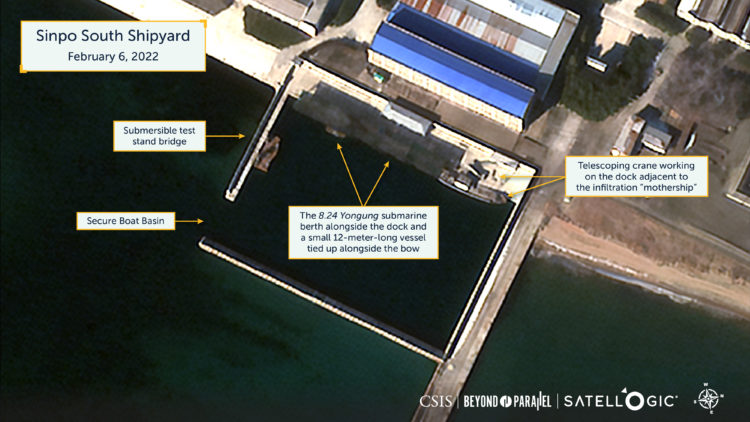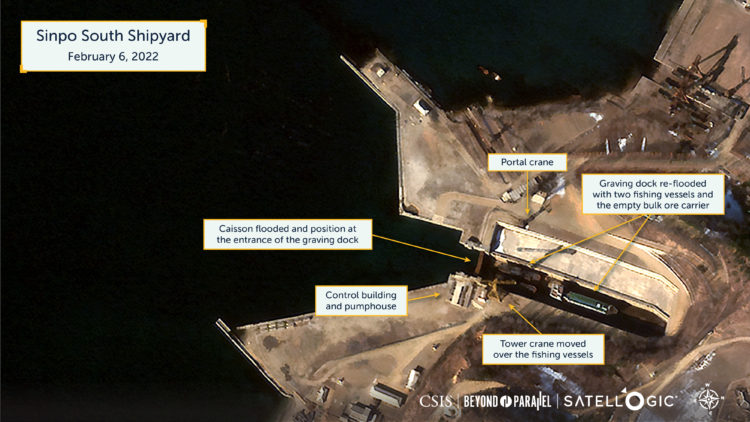
Sinpo South Shipyard Update: Activity Within the Secure Boat Basin

Key Findings
- New and somewhat unusual activity has been observed around the 8.24 Yongung experimental ballistic missile submarine (SSBA) at the Sinpo South Shipyard’s secure boat basin during the past four weeks.
- Previously, the 8.24 Yongung underwent extended maintenance and repair during November-December 2021 following damage suffered during its October 19, 2021, test launch of a “new type” submarine-launched ballistic missile (SLBM).
- At this time, it is unclear whether the recent activity is an indicator of continuing work on the 8.24 Yongung SSBA, new work being undertaken on an infiltration mother ship, an ongoing deception program, or a combination of these and other reasons.
- The 8.24 Yongung plays a critical role in the under-way development of SLBMs, ballistic missile submarine technology, and operational procedures. It is also an indispensable tool for the hands-on training of new submariners.
Satellite imagery acquired by Satellogic during the past four weeks shows recent activity within the secure boat basin at the Sinpo South Shipyard—some of which may be related to ongoing work on the experimental ballistic missile submarine, 8.24 Yongung (August 24th Hero). As described in our January report, the 8.24 Yongung suffered a malfunction resulting in damage during its October 19, 2021 test launch of a “new type” SLBM. After undergoing repair and maintenance work within the secure boat basin during October-November 2021 and subsequently within the Sinpo shipyard’s graving dock in early December, it returned to the secure boat basin around December 16.
No significant activity was observed within the secure boat basin for the next two weeks. Then, sometime between January 5 and 8, 2022, the infiltration mother ship (see below) —which has been present within the secure boat basin since February 2021 and is rarely moved unexpectedly—exchanged positions with the submersible missile test stand barge that has been berthed here since about 2014. Sometime between January 31 and February 3, 2022, a telescoping crane returned to the secure boat basin and was observed dockside adjacent to the mother ship and aft of the stern of the submarine—a similar crane was observed working on the 8.24 Yongung for extended periods between November and December of 2021.
Subsequently, an image acquired on February 3, 2022, shows that while the telescoping crane remained in the same position, the stern of the 8.24 Yongung has been positioned away from the dock, and the sail was just visible.

Three days later, on February 6, the submarine was once again positioned alongside the dock, and a small 12-meter-long vessel was now tied up to the bow of the submarine. The telescoping crane was still present.

At this time, it is unclear whether this activity is an indicator of continuing work on the 8.24 Yongung, new work being undertaken on the mother ship, a deception program being undertaken by North Korea, or a combination of these and other factors.
During the same period under discussion, Satellogic imagery shows that there has been no significant submarine-related activity elsewhere at the Sinpo South Shipyard or the Sinpo Shipyard’s graving dock. Imagery of the dock does, however, show commercial activity. A February 3 image shows that it has been flooded, the caisson has been positioned along a wall, and an empty bulk carrier moving to enter it.

Three days later, on February 6, the empty bulk carrier and two fishing vessels have been positioned within the graving dock, the caisson has been moved back into position, and the dock is being drained.

Infiltration Mother Ships
While some have reasonably asserted that the infiltration mother ship observed in the secure boat basin is a support vessel, it is not. Rather, it is an example of a class of infiltration mother ships that have previously been used by North Korea to deploy agents using high-speed landing craft for infiltrations into Japan and South Korea. These vessels are purposely designed to look very similar to fishing vessels but have significantly different lower hull configurations and interior layouts, including four high-speed diesel engines and a stern-opening wet well.
Over the years, infiltration mother ships have occasionally been observed at the Sinpo South Shipyard for maintenance and repairs—both in the secure boat basin or along nearby pier. The support vessel used during test launches of SLBMs from the 8.24 Yongung or the submersible test stand barge is of a different configuration.
